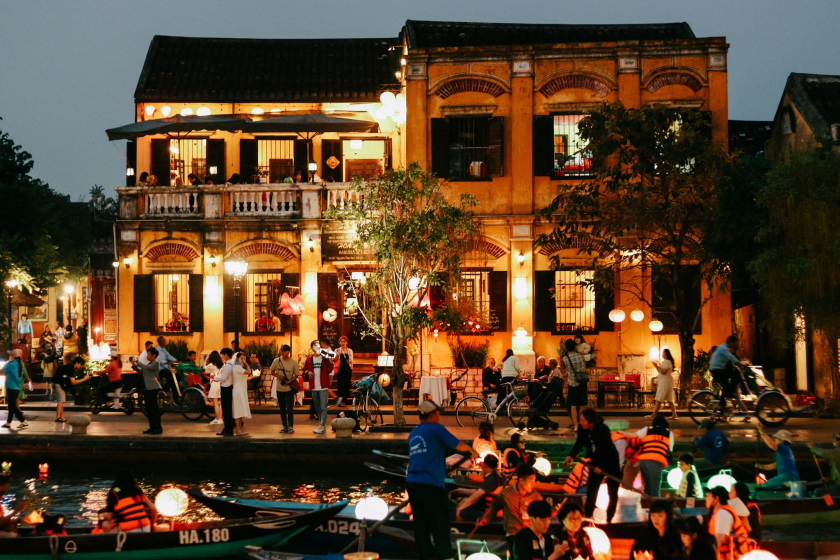Hoi An Ancient Town, recognized by UNESCO as a World Heritage Site in 1999, stands out as an ancient city renowned for its unique architecture and significant cultural history. Once a bustling trading port in the 16th and 17th centuries, Hoi An attracted merchants from various nations, fostering a cultural exchange among Vietnam, China, Japan, and Europe.
1.Unique Architecture
Ancient Houses: These houses follow traditional architectural styles, featuring yellow walls, red-tiled roofs, and narrow corridors, harmonizing with nature while reflecting Eastern aesthetics.
Japanese Covered Bridge: Built by Japanese merchants in the 17th century, this covered bridge crossing the Hoai River is an iconic symbol of Hoi An and embodies Japanese-Vietnamese cultural fusion.
Assembly Halls: Hoi An is home to many Chinese community halls, including the Phuc Kien, Trieu Chau, and Quang Dong assembly halls, which boast intricate designs and elaborate decorations.
2.Distinctive Cultural Features
Festivals and Customs: Hoi An is famous for its traditional festivals, such as the Lunar New Year, Mid-Autumn Festival, and especially the Lantern Festival, held on the 14th day of each lunar month.
Cuisine: Hoi An is also a culinary paradise, known for famous dishes like cao lau, banh mi, mi Quang, and che bap (corn pudding), each bearing a cultural signature and local creativity.
3.Cultural and Historical Significance
Hoi An not only preserves ancient architecture and arts but also maintains the lifestyle, customs, and traditions of a centuries-old town. The cultural setting, architecture, and tranquil pace of life make Hoi An a captivating destination for both domestic and international visitors.
Hoi An Ancient Town is a vivid testament to the development of Southeast Asian trading ports and remains a place that preserves and showcases the cultural essence of Vietnam through the ages.



